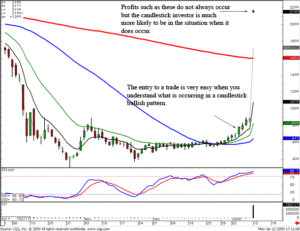Following stock market news can be a great source of information for the successful trader. Whether gleaning facts or anticipating emotional responses by other investors, it is possible to garner a great deal of information from stock market newsletters and from both the print and network media outlets.
For example, the stock market news was buzzing on October 27, 2006 when the US Commerce Department announced that the economy was at its slowest pace in over three years, spurring speculation that the comfortable landing many had desired might not be found. Investors forced up the price of stocks in October, speculating that the economy was entering a slow period. The theory was that a gradual leveling wouldn’t affect corporate profits or consumer spending. A gradual slowdown is desirable to protect the economy from the threat of inflation and to encourage the Federal Reserve to lower short-term interest rates. Technical analysis of the stock market news led investors to believe that the report on the GDP (the broadest measure of the economy) would show slowing growth, but the report confirmed the belief that the sluggish housing market might affect other areas of the economy. The 1.6 percent growth rate was below the expected 2.1 percent forecast, fueled mainly by the lethargic housing market.
While the stock market news seemed to affect the greed and fear of the investors, some experts viewed the downturn as an indication of profit-taking and consolidation. The news of the stock market adjustment was the perfect opportunity for some traders to take a deep breath after the recent run and review their portfolio diversification. While trading was down for both the Dow Jones and NASDAQ stock exchanges, their totals were still up, further indicating a temporary adjustment and not a major downturn.
Such movements are valuable when learning about the stock market. For a beginner investing in the stock market, it is important to differentiate between technical facts and emotional trading. While stock technical analysis changes only if information on a particular company or its stock changes, emotional trading can be affected by a stock market report on the news. Even a skilled trader can be moved by such sensational news, so it is imperative that a beginner be wary. It is possible for a trader, using a stock trading plan and a stock trading system, to avoid being lured into reacting only to news about the stock market.
A stock investing system is crucial because it prevents a trader from becoming emotionally invested in the stock market news. This system should include stop loss strategies and techniques which aid the trader in decision making when a stock is faltering. In addition, a stock trading system implements technical analysis, keeping the investor focused on the factual side of trading and not on which member of the stock market is making news. Using a system such as Japanese Candlesticks, even a beginning investor can be certain that he, or she, is prepared to act analytically even when the stock market news is bad.


